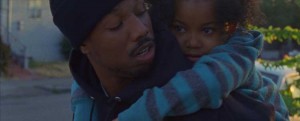
Providing end-to-end services for the Super 16 mm project, FotoKem and SPY worked closely with the filmmakers from start to finish. Fruitvale was processed and transferred at FotoKem in Burbank. The files were delivered to SPY’s headquarters in San Francisco, where colorist Chris Martin color graded the film with Coogler and Morrison. The two facilities are securely connected by a high-speed network offering real-time interface capabilities between the locations to provide the creative community with easy access to the full breadth of postproduction services that FotoKem and its companies offer.
Fruitvale follows the final day of 22-year-old Oscar Grant, who was gunned down by a police officer at the Fruitvale stop of an Oakland transit line. The tragedy was caught on video, and the incident made national headlines.
The movie was shot on location in San Francisco. The Super 16 footage was then shipped to Burbank, scanned to HDCAM SR, and conformed at SPY.
“Our color grade supported the quality of grain and tonal palette that the Super 16 format brought to the story,” Martin recalled. “Specifically, we approached the process as if we were timing in a film laboratory, avoiding the feeling of a digital grade. Building in contrast and adding weight to the mid-tones, rather than overcooking the shadows and highlights, brought a very specific emotional element to the film. The result is a feeling of intimacy that holds the personality of the film and supports Rachel’s amazing camera work. Obviously the audience at Sundance agreed.”
Martin noted that Fruitvale can be divided into two worlds – the quiet intimate world of Oscar and his family, and the larger, institutional world where Oscar encounters conflict. “Oscar’s world tends to be defined by warmer scenes with more intimate contrast while the institutional scenes are seen with a wider lens and more mixed lighting, embracing an observational feel,” says Martin. “So while we maintained the same approach for all the scenes, there’s a wonderful dichotomy between the two worlds.”





